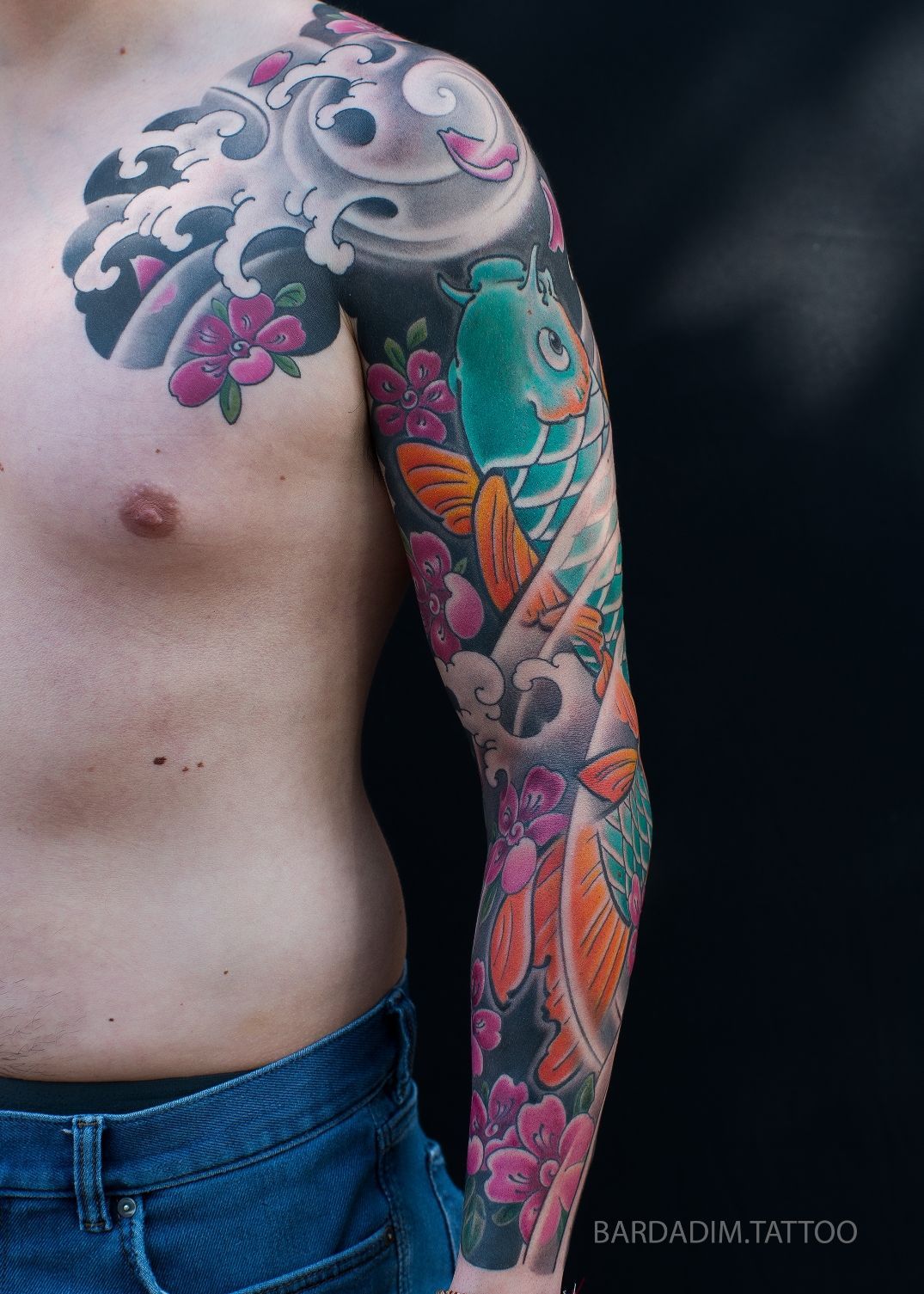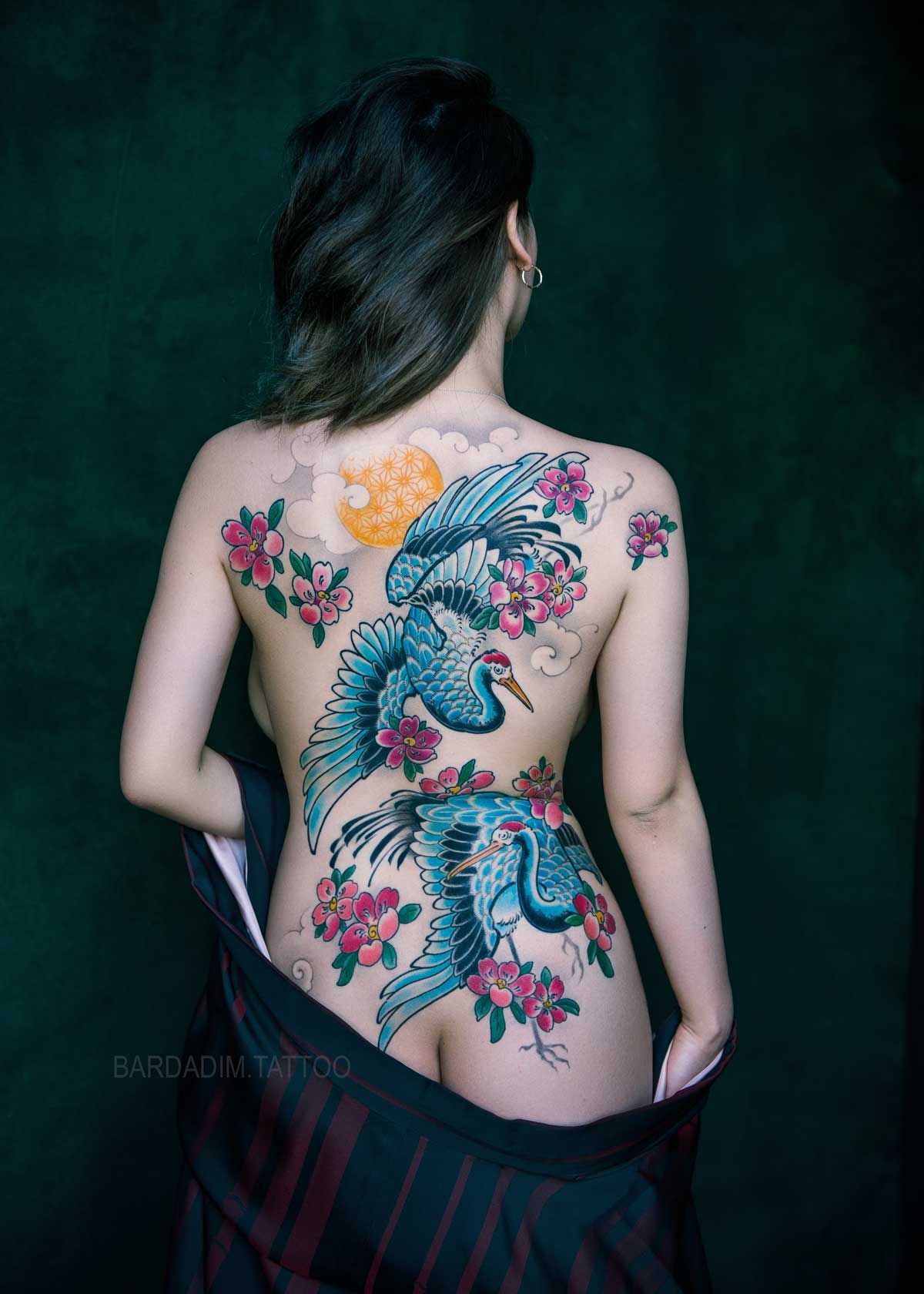Irezumi Patterns
Layout
In traditional Irezumi, the tattoo design must be based on a full-body concept which is created in sections that correspond to different body parts. Each section has its own unique pattern that can be appreciated individually, but also fits together with the surrounding sections. These sections are like puzzle pieces that form a larger picture when completed. The backgrounds of the tattoo are always done in black and grey, creating a cohesive and unified look. On the other hand, the main subject of the tattoo - Shudai is usually done in color, adding vibrancy and depth.
The layout of an Irezumi tattoo is crucial, as it should make sense thematically and reflect the natural contours of the body. When done properly, these tattoos maintain their distinct and timeless style, still looking impressive even after several decades.
Shudai
A significant and integral aspect of Japanese tattoo art lies in the intricate inclusion of a central focal point known as "shudai." This shudai serves as a symbolic representation, commonly portraying an animal, whether fantastical or real, a character from ancient folklore or mythology, or even a delicate natural element like a blooming flower. The careful selection and detailed depiction of the shudai play a crucial role in conveying deeper meanings and telling unique stories through the artistry of Japanese tattoo designs.
Keshoubori
Keshoubori, a term in Japanese tattoo art, embodies the intricate details and additional embellishments that serve to enhance the central design and emphasize the primary theme. These exquisite details are often meticulously crafted and may include iconic symbols such as cherry blossoms, maple leaves, and a diverse array of other flowers that contribute to the overall beauty and symbolism of the artwork.
-
KESHOUBORI
ButtonCherry blossoms are secondary elements








